When we look at plant catalogs and nursery tags, I bet one of the first things we get excited about is finding the little butterfly symbol showing that the plant brings in, well, butterflies. Of course, more often than not it’s simply referring to the flower nectar, which is available for only a short time.
The leaves, however, are available for many months, and that’s where true butterfly gardening begins — if you garden for the caterpillars, you’ll have more butterflies than flowers alone can provide. It’s also a fair bet that you’ll have more birds, especially in spring, when they feed their young a 100 percent insect and caterpillar diet. Let’s look at seven native plants that will help you grow an ecologically booming, butterfly farm environment right out the door.
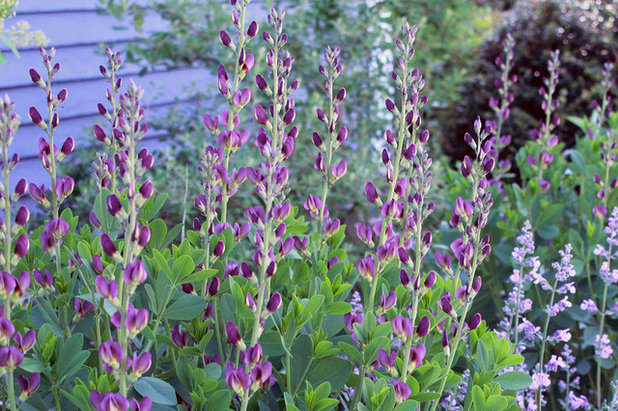 BaptisiaNative from the U.S. Midwest to the East Coast
BaptisiaNative from the U.S. Midwest to the East CoastThere are many species of Baptisia; the most common one you’ll see in nurseries is
Baptisia australis and its cultivars. Native to almost all of the Midwest to the East Coast, it’s a humidity-loving, drought-defying, clay-busting miracle plant. At a mature size of about 4 feet tall and wide, it provides for many
sulphur butterfly species, as well as the
hoary edge butterfly. Full sun is best.
Other Baptisia include:
- B. alba: Has white flowers and prefers moist soil
- B. bracteata: Shorter
- B. sphaerocarpa: Has yellow flowers and is native to the Gulf Coast
See how to grow Baptisia
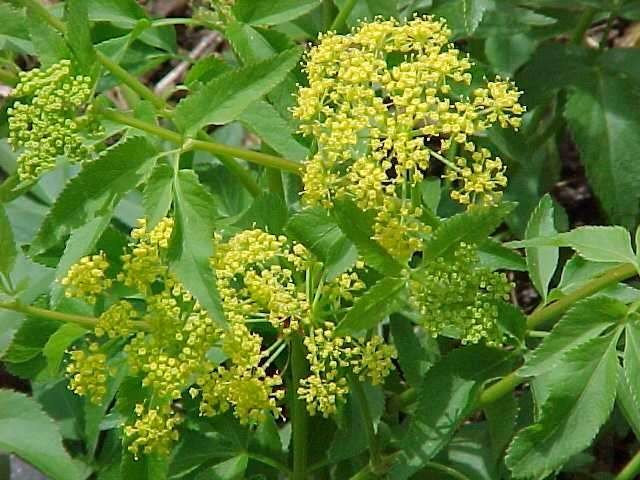
Missouri Botanical Garden
Golden AlexandersNative from the eastern Great Plains to the East CoastGolden Alexanders (
Zizia aurea) has a very wide growing range, from the eastern Great Plains to the Atlantic. Full sun to some shade is best, and it can grow in moist to medium soil to 3 feet tall and wide. Every year I have
black swallowtail caterpillars munching on this easy-to-grow plant; it’s much easier to control in the garden than the nonnative bronze fennel that swallowtails also enjoy.
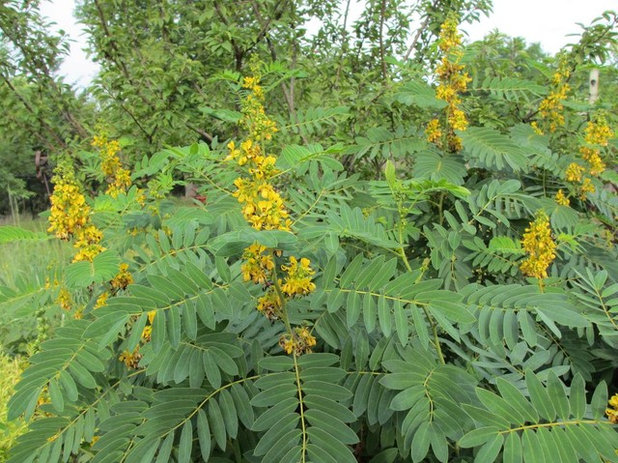
Benjamin Vogt / Monarch Gardens
American SennaNative from Wisconsin and Illinois east to southern New England and south to Georgia and TennesseeThis is a big fella in my garden, at 5 feet tall and wide; I have it in medium clay soil in full sun. The leaves are so cool; it blooms forever in late summer, and bumblebees go nuts on it. American senna (
Senna hebecarpa) is a host for
cloudless and
orange-barred sulphurs. It can grow in moist to medium soil of most kinds, and I’m now even experimenting with dry clay. (Wish me luck.)
See how to grow American senna
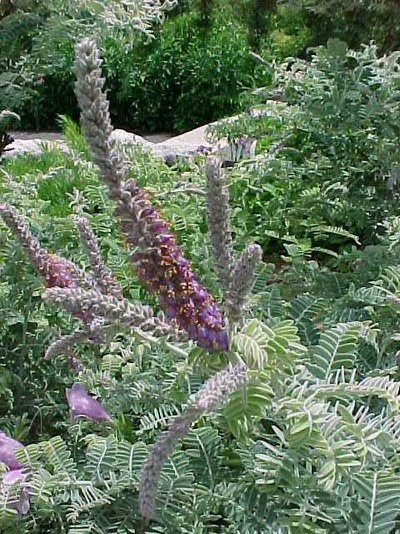
Missouri Botanical Garden
Lead PlantNative from the Midwest down to TexasOut here in prairie country, you know the land is healthy when you see lead plant (
Amorpha canescens). More like a small shrub, at about 2 feet tall and wide, it’s a drought-loving machine with very unique early-summer bloom spikes and gray-blue foliage. The
southern dogface butterfly lays its eggs on lead plant, as well as on the spectacular purple prairie clover (
Dalea purpurea).
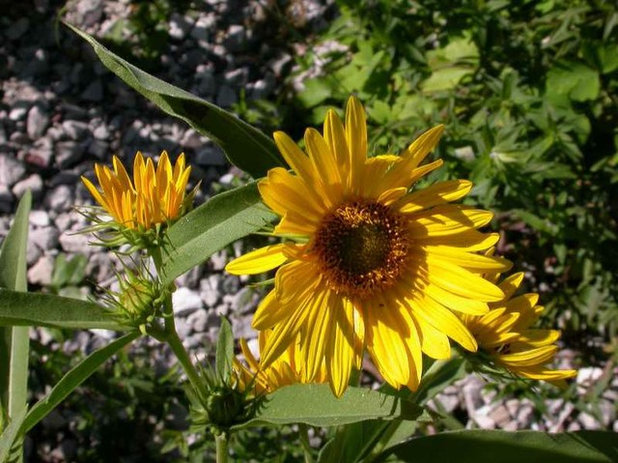
Missouri Botanical Garden
Maximilian SunflowerNative to almost the entire U.S.
Growing anywhere from 3 to 10 feet tall — shorter in drier soil; taller in wetter — Maximilian sunflower (
Helianthus maximiliani) is quite adaptable. As with most sunflowers, you’ll want to give it room, as it does like to spread, but you’ll also be attracting lots of birds to its seeds (I’m pretty sure I had no seed left this year; the goldfinches were so active). It’s native to almost the entire U.S., and you’ll find
silvery checkerspot and the
painted lady placing eggs on its leaves.
See how to grow sunflowers
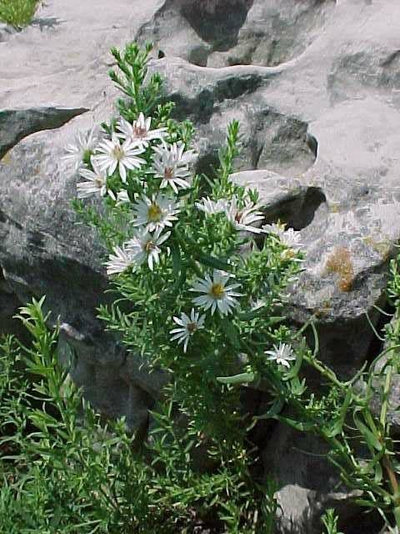
Missouri Botanical Garden
Heath AsterNative from the Great Plains to the East CoastA mid- to late-fall bloomer, at about 1 to 3 feet tall and wide, heath aster (
Symphyotrichum ericoides) attracts many insects to its flowers. Drought tolerant, it almost prefers sandy, rocky, dry clay soils. It’s native from the Great Plains eastward, and
pearl crescent butterflies use it as a host plant.
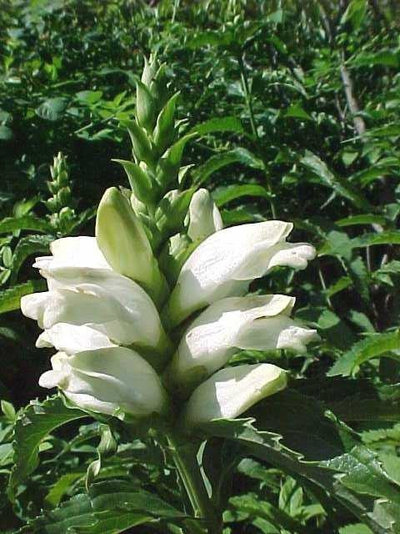
Missouri Botanical Garden
TurtleheadNative from the Midwest to the East CoastBlooming in late summer into fall, turtlehead (
Chelone glabra) gets about 3 to 4 feet tall and slowly spreads to 2 to 3 feet wide. Perfect for rain gardens in full sun to half shade, preferring wet to medium soil, it’s pretty carefree, like the other plants listed here. Turtlehead is host to the
Baltimore checkerspot, which overwinters as larvae in the garden (so don’t cut down your garden in fall!).
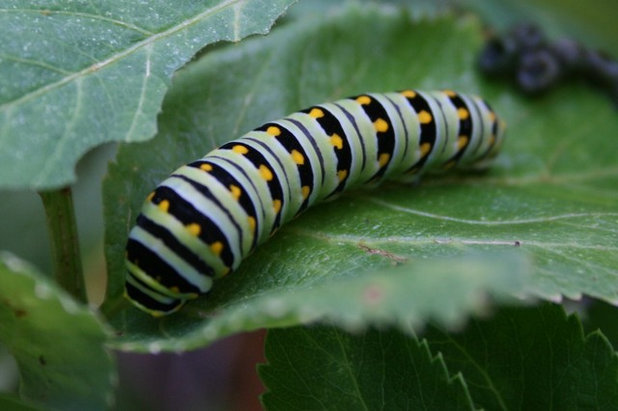
Benjamin Vogt / Monarch Gardens
There are so many other butterfly host plants too, such as:
- Plantain for common buckeyes
- Nettle for red admirals
- Spicebush for spicebush swallowtails
Some of the best trees you can plant to support the most butterflies are
black cherries,
oaks and
elms. The key is to always hedge your bets and use native plants, and to create a diverse garden of varied flowers, shrubs and trees. Good luck this year! Here’s to more caterpillars, like this black swallowtail resting on a zizia leaf (with its poop piled behind).
More:Butterfly Gardening: Delight the Eyes With Living Sculptures
Be a Butterfly Savior — Garden for the Monarchs





